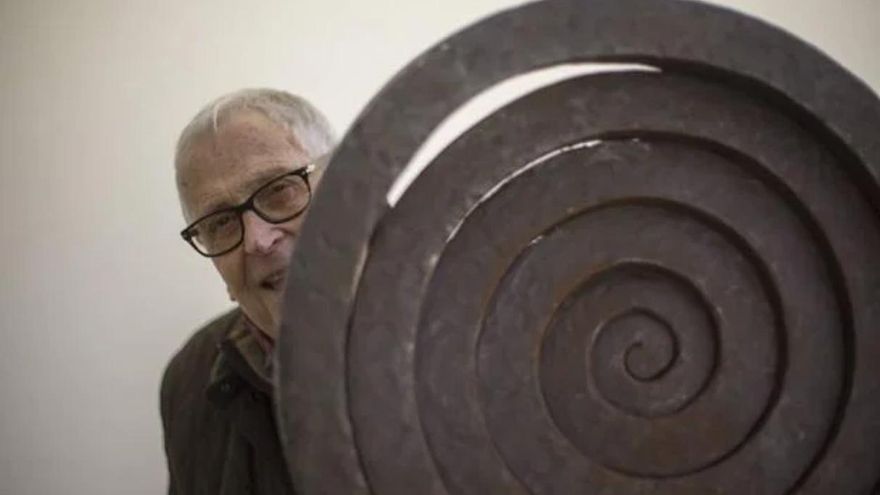
When my father and I believed that the entire mountain was covered in oregano, we went to lunch at the residence of Martín Chirino, the renowned Canarian artist who built his legacy through his dedication to sculpture.
At that time, Chirino was residing in Tenerife, completing one of the remarkable sculptures he left behind in the Canary Islands. It was the Lady, positioned before the College of Architects of Santa Cruz, adjacent to a ravine reminiscent of the one he visited when I was a young boy, while my father bore the embarrassment caused by decay.
Martin was already, for us youngsters, a mentor whom his friends affectionately called “Master” due to his Anglo-Saxon connections and aspirations. He was indeed an extraordinary figure, who lived almost to a century (which he has now reached) in perfect lucidity, immersed in his passions, which included art, music, and engaging discussions. His insatiable curiosity and cultured nature kept him constantly alert, giving him a considerable advantage over contemporaries who mistakenly believed they had exhausted their intellectual journeys yet remained at the brink of ignorance.
We all referred to him as Chirino, although in person he was simply Martin, with or without an accent; he was a benefactor, a compassionate individual who welcomed others to inspire and even provide shelter. Fernando Delgado, our dear friend, resided in his home in San Sebastián de los Reyes, where I would visit him alongside José Luis Fajardo to spend time with Martin and his family.
The residence of Martín Chirino and his partner Margarita, along with their daughter Marta—who is also an artist and currently leads his foundation—was situated at the end of one of those streets in the outskirts that sometimes resembled a quagmire whenever it rained, a setting we nostalgically recalled from our childhood days at the beach. That beautiful house was designed by the notable architect Antonio XXX, one of the greats of that era.
These excursions, driven by our quest for news of the future, allowed us to realise that almost everything Chirino imparted effortlessly became a legacy for those around him. Over time, this man, whom we continuously sought to support in refining his art, particularly during his extended stay in Tenerife, where he wholly dedicated himself to the Lady as if it were an individual, became vital to our gatherings, our passions as journalists, painters, or artists of any genre.
His ultimate passion remained unwavering until his final days, until his last breath, friendship. Whether he was leading the Circle of Fine Arts in Madrid, conceptualising the impressive project known as Caam in Gran Canaria, or working on a grand sculpture exhibition in the streets of Tenerife, Chirino was perpetually engaged in the creation of both legend and reality, assisting his friends Westerdahl and Pérez Minik in feeling that their influential works from before the Civil War might someday resonate again through his actions and their collective legacy.
These were impactful years and challenging times, crucial for comprehending that the historical period, while lamentable, should be respected rather than repeated. Amid this enriching chapter of life intertwined with Martín, his family, his fervour, and his kindness, he visited my home where my mother would always serve him her traditional dish of fried eggs.
I recall my father approaching me, firmly believing that this man was genuinely as he appeared, a generous soul. This was the moment I was prompted to ask him for a favour. I was not yet engulfed in the self-doubt I experience now, and I conveyed to the maestro what my father deemed imperative.
The outcome was a profound demonstration of Chirino’s solidarity, for which I expressed my gratitude when I received the first payments that brightened my day. Now we, the Canarians, owe Chirino our gratitude for everything he accomplished not only in the realm of the profoundly human but also specifically within the islands of his birth.
The term generosity is included not without reason, as it is well understood that it flourishes and is forgotten. In this instance, it should not be overlooked that there are times when communities fail to fulfil their obligation of gratitude to the artists who have enriched our lives.
















